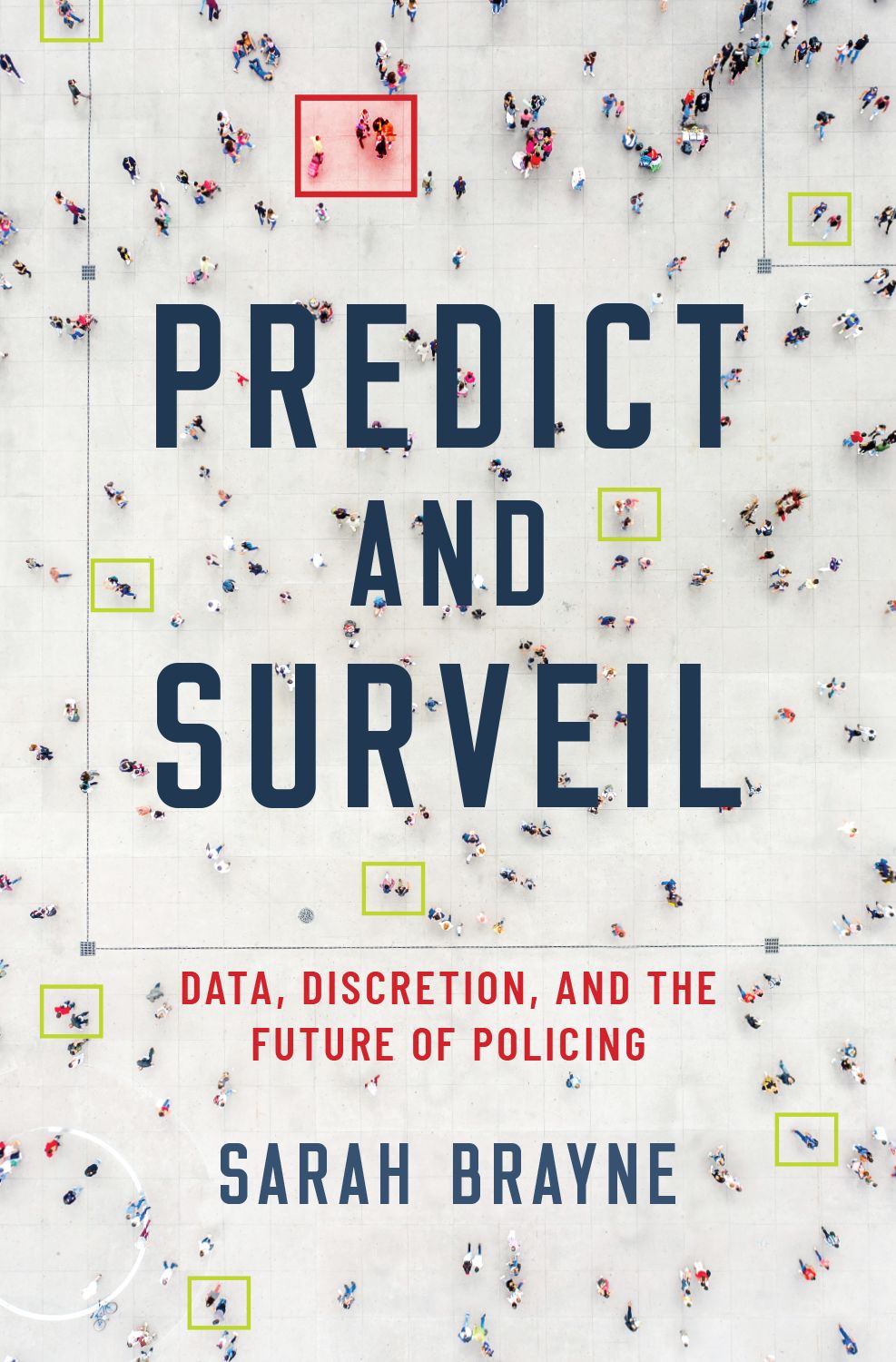

Assistant Professor of Sociology at The University of Texas at Austin and UBC Sociology alumna Sarah Brayne published her new book, Predict and Surveil: Data, Discretion, and the Future of Policing, last November. Dr. Brayne completed her BA in Sociology in 2008 before completing her PhD in Sociology and Social Policy at Princeton.
A groundbreaking examination of the growing role of the private sector in public policing, this book challenges the way we think about the data-heavy supervision law enforcement increasingly imposes upon civilians in the name of objectivity, efficiency, and public safety.
We spoke to Sarah about her new book.
The scope of criminal justice surveillance has expanded rapidly in recent decades. At the same time, the use of big data has spread across a range of fields, including finance, politics, healthcare, and marketing. While law enforcement's use of big data is hotly contested, very little is known about how the police actually use it in daily operations and with what consequences. In Predict and Surveil, UBC Sociology alumna Sarah Brayne offers an unprecedented, inside look at how police use big data and new surveillance technologies, leveraging on-the-ground fieldwork with one of the most technologically advanced law enforcement agencies in the world-the Los Angeles Police Department. Drawing on original interviews and ethnographic observations, Brayne examines the causes and consequences of algorithmic control. She reveals how the police use predictive analytics to deploy resources, identify suspects, and conduct investigations; how the adoption of big data analytics transforms police organizational practices; and how the police themselves respond to these new data-intensive practices. Although big data analytics holds the potential to reduce bias and increase efficiency, Brayne argues that it also reproduces and deepens existing patterns of social inequality, threatens privacy, and challenges civil liberties.
Was there anything that surprised you about how the LAPD was using big data and new surveillance technologies?


University of Texas Professor Sarah Brayne
The first surprise was the scale of police surveillance in the digital age. Law enforcement surveillance today is both wider and deeper, meaning it includes a broader swath of people and can follow any single individual across a greater range of institutional settings. Another thing that surprised me is the growing role of the private sector in public policing. Law enforcement is increasingly relying on private vendors and platforms to collect, store, share, and analyze data about its citizenry. This is an important shift because private vendors can circumvent typical public-sector transparency requirements, ultimately making big data policing harder for scholars to study, regulators to regulate, and activists to mobilize for or against.
“Even people with no direct police contact can be drawn into the police surveillance web simply by having a network tie to a person of interest.”
What did you learn about how police were using algorithmic control and predictive analytics?
The police use big data to conduct two different kinds of surveillance, dragnet and directed surveillance. Dragnet surveillance refers to surveillance tools that gather information on everyone, rather than merely those under suspicion. An example of a dragnet surveillance tool is the automatic license plate reader, or, ALPR. ALPRs can be mounted at static locations like intersections or dynamic, mounted on cop cars, for example. They take two photos of every car that passes through their line of vision and records the time, date and coordinates. Just this one, relatively simple technological tool makes everyday mass surveillance possible on an unprecedented scale. Directed surveillance, by contrast, refers to the surveillance of people and places deemed higher risk or suspicious. An example of directed surveillance is predictive policing, or, the use of historical crime data as training data in algorithms to predict when and where future crime is more likely to occur and who is more likely to commit it. Law enforcement typically uses person-based predictive policing to predict violent crime, and place-based predictive policing to predict violent crime. Importantly, dragnet and directed surveillance are not mutually exclusive. Even people with no direct police contact can be drawn into the police surveillance web simply by having a network tie to a person of interest.
Can you explain the tension between big data’s ability to reduce bias while simultaneously reproducing and deepening existing social inequality? How does this play out in your research?
Proponents argue that big data analytics may be a means by which to ameliorate persistent inequalities in policing. For example, big data policing leaves a digital trail, and if those trails can be externally audited, they can be used to “police the police.” Or, if big data can be used to fill information gaps, police may rely less on inequality-reproducing stereotypes. However, I found that in practice, data-intensive police surveillance practices are often implicated in the reproduction of inequality. First, the premise behind predictive policing is that we can learn about the future from the past. The “past,” for predictive policing algorithms, is historical crime data, which are a function of both actual crime rates but also enforcement practices. When we hold up a mirror to the past, any inequalities in those data are reflected into the future. Second, data-intensive policing is widening the criminal justice dragnet, and doing so unequally. Third, integrating nonpolice data into law enforcement systems may be associated with an unintended chilling effect called “system avoidance,” or, the deliberate and systematic avoidance of institutions that keep formal records such as hospital, banks, schools, and employment.
“This research serves as a cautionary tale, showing that big data surveillance is not a silver bullet.”
Has there been any change to how police are using big data in response to Black Lives Matter and the protests that happened over the past year?
I’ve noticed a couple of trends. First, police reformers are increasingly positioning big data as a solution to any number of issues with racial inequality in policing. Defunding the police and need to cut costs? Data can help allocate resources more efficiently. Need to reduce racial bias in officer decision-making? Automate it. This research serves as a cautionary tale, showing that big data surveillance is not a silver bullet. A second trend I have noticed is the use of new surveillance technologies to surveil protesters. This is not a new trend, of course, but the technologies being used today—including drones and facial recognition technology—make surveillance possible at an unprecedented scale.


